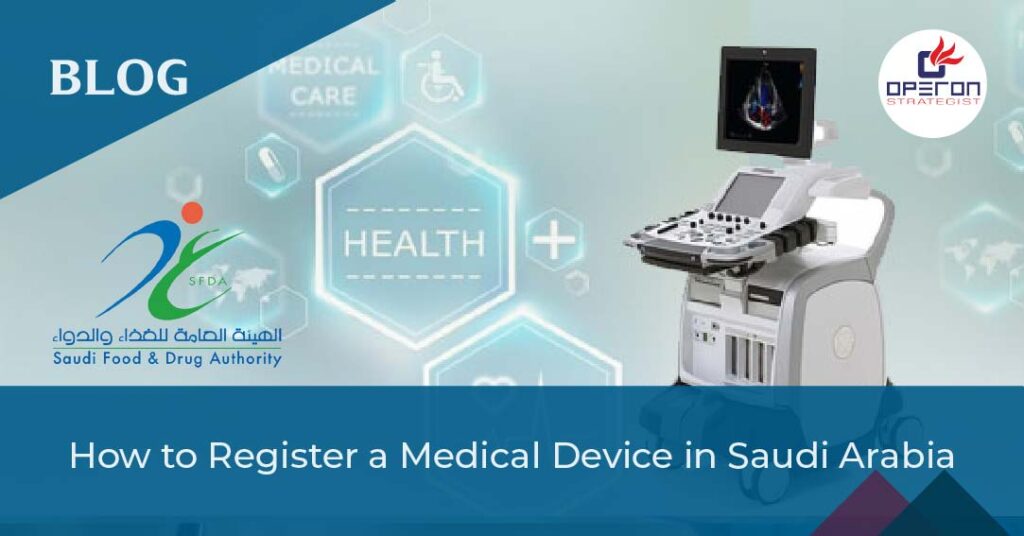Overview of Medical Device Classifications as per SFDA
The Saudi Food and Drug Authority (SFDA) plays a vital role in ensuring the safety, efficacy, and quality of medical devices available in the Kingdom of Saudi Arabia. One of the most important aspects of regulatory compliance for medical device manufacturers and distributors is understanding how devices are classified.
In this blog, we’ll explore the SFDA’s medical device classification system and its implications for market access in Saudi Arabia.
Looking For a Medical Device Regulatory Consultant?
Why Medical Device Classification Matters
The classification of a medical device determines:
- The regulatory pathway for approval.
- The level of scrutiny during the evaluation process.
- The documentation required for registration.
- Post-market surveillance obligations.
Correct classification is essential to avoid delays in registration and ensure compliance with SFDA regulations.
Classification Criteria
The SFDA uses several factors to classify a medical device, including:
- Degree of invasiveness
- Duration of contact with the body
- Part of the body affected
- Whether the device delivers medicinal products
- Technological characteristics
Manufacturers are responsible for correctly identifying the medical device classifications per the SFDA of their devices and justifying their rationale during the registration process.
Medical Device Classifications as per SFDA
The SFDA classifies medical devices based on the risk they pose to the patient and user, similar to international guidelines.
Medical Device Classes:
Class | Risk Level | Examples |
A | Low | Bandages, surgical gloves, thermometers |
B | Low to Moderate | Suction equipment, hypodermic needles |
C | Moderate to High | Infusion pumps, orthopedic implants |
D | High | Pacemakers, heart valves |
IVD Classification as per SFDA
In Vitro Diagnostic Devices (IVDs) are classified by the SFDA using a separate, risk-based framework depending on intended use, risk to public health, and impact on individual treatment decisions.
IVD Risk Classes – SFDA:
Class | Description | Examples |
A | Low Individual Risk, Low Public Health Risk | Specimen receptacles, laboratory instruments |
B | Moderate Individual Risk, Low Public Health Risk | Blood chemistry tests (e.g., glucose meters) |
C | High Individual Risk, Moderate Public Health Risk | Infectious disease tests (e.g., influenza, STDs) |
D | High Individual & Public Health Risk | HIV, Hepatitis B/C, blood group typing |
Key Factors in IVD Classification:
- Intended use (screening, diagnosis, monitoring)
- Type of analyte detected
- Impact on clinical decision-making
- Potential for public health consequences
Correct classification is essential for determining the documentation, clinical evidence, and regulatory pathway required by the SFDA.
Ready to Enter the Saudi Market?
Navigating SFDA regulations can be complex—but it doesn’t have to be. Our team specializes in helping medical device companies streamline their registration process and achieve fast, compliant market entry in Saudi Arabia.
The Role of Operon Strategist in Regulatory Compliance
Operon Strategist is a globally recognized regulatory consultancy that supports medical device and IVD manufacturers throughout the product lifecycle—from design and development to registration and post-market compliance.
Key Services Include:
- Regulatory Strategy & Market Access
- Determining classification
- Planning regulatory submissions
- Medical Device & IVD Registration
- Dossier compilation and submission
- E-Technical File (eTF) support for GHTF member countries
- Quality Management System (QMS) Compliance
- ISO 13485 implementation
- Internal audits and mock inspections
- Supplier and risk management procedures
- Training & Documentation
- Regulatory training for internal teams
- SOP development
- Labeling and UDI compliance




